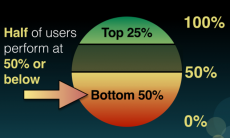Everyone is talking about the importance of content marketing, but it’s rare to find someone who can articulate both the why and the how of the discipline. Hayley Nelson is a digital marketing expert who has built and run content teams at the New York Times, Wired, and CNET, and is currently creating a content marketing approach for Airbnb. She understands not just how to create compelling content but how to use it to support your business goals. (For more smart thinking from Nelson, see her recent post on LinkedIn.) We caught up with her to ask about the trends she’s seeing and what brands you should be looking to for inspiration.
Content marketers are suddenly in demand, which is good news for people like us. But it seems like the practices and even the definitions are all over the place. What are you seeing?
There are many mature start-ups and pre-IPO companies that have been super successful at ramping their businesses without coming up with a cohesive approach to the customer lifecycle. They have achieved tremendous growth, and now they’re asking, what are the various touchpoints where we engage customers, and what is the right content/messaging to serve at that moment? What content can you serve that deepens engagement? What does that engagement look like? You’d think they would have mastered this already, but everyone is trying to figure it out.
You’ve said it’s important for brands to clearly define what they stand for and then use content to express those values. Which brands are getting it right?
It’s almost a cliche now that millennials want a sense of purpose in their products, but the purpose-driven narrative has become even more important. There are several brands that are nailing it. Patagonia is politically active, and they’re so on top of it. On the day that the Trump administration announced that they would cancel the expansion of Bear’s Ears Monument in Utah, their whole website went dark. They put the news in their email newsletter, posted pictures on Instagram — it was all so well-coordinated. All their channels look like they’re done by the same team.
Everlane is another brand getting it right. Everlane is about transparency, and they lead with that. On the day they announced they were getting rid of virgin plastics in their supply chain, they sent an email from the CEO, and then their Instagram feed had a visual version of the story. The website has a Factories tab on the nav bar so you can look up exactly where the products are made. On Instagram Stories they do Transparency Tuesday where they respond to questions from their community. When it comes to retail, they’re using their stores as a gathering place so people can come in and do activities, like making signs for the Women’s March. They are thinking very carefully about the person they reach.
Everyone has to figure out what they stand for. Some brands are having to start from scratch, and ask themselves hard questions– beyond this product or service we offer, what is our higher purpose? . Good marketing starts when you can ladder your product or service to your mission and values as a company.
What’s the payoff of that approach?
Well, I will now organically follow Everlane on social, for instance, because they have great photos and they’re smartly targeting me with ads that look like good content. The same is true of Rothy’s: I can see five pair of shoes by scrolling through Instagram, and because I’m already a customer, I’m willing to engage with their ads. Hypertargeting has so many downsides, but this is working really well.
Video has taken over our social channels. How should marketers be thinking about social video?
People who come from more of a broadcast background will shoot a video, turn over the finished product and then the social team tweaks it. Tastemade is a good example of taking a different approach that I think is spot on. For every video they create, they do four edits — they edit differently for Facebook, YouTube, and Instagram. They literally have tape on their monitors to show an Instagram square. And they are A/B testing everything: they’ll change a background from pink to blue and watch the lift. This is what optimizing content looks like.
In the early days, branded content seemed to be founded on the “more obvious the better” principle. That’s really changed, right?
Tastemade is a good example here, too. They have an amazing mini-documentary of a woman who’s a chef in Maine. L.L. Bean sponsored it. She wears their clothes while she’s looking for oysters; she uses the L.L. Bean blanket for the picnic. But she has a big story to tell and L.L. Bean is subtly integrated into her story, not the other way around. Patagonia did a documentary called “Fishpeople” that has almost no product in it–it’s just a nice film about people with an active, outdoor lifestyle.
The other trend is that media companies are creating sponsored content that they can reuse and edit sponsors out of. The content doesn’t just get created for the sponsor and then die. It’s flexible. That’s the kind of content sponsors want too — they can be as involved as they want to be.
What if your business is smaller and your budgets are tight? Not everyone can make a documentary, even a short one.
You just have to be smart about where you spend. Say you’re in the B2B space: It doesn’t cost that much to look at the data you have and write a thought leadership piece based on your unique insights as a business. Choosing wisely is the key. There’s no reason to do Instagram if you’re not visual or video-driven. Your content should articulate why you’re excited about what you’re doing. Do it quarterly and put it in all the right channels (where you reach your target audience). Look at what you know, what is unique to your operation, and open your kimono to share it with the world.
What else do you think companies need to be reminded of?
I always say this: If you don’t have good UX, you can’t win. If your app doesn’t work you’re going to lose customers. It has to be easy. Bonus points if it looks really good. The design and UX standards are out there. It’s not rocket science.






